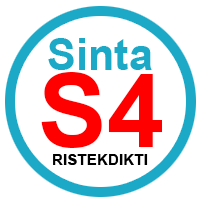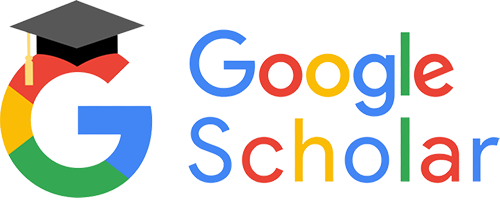Development of Islamic Financial Literacy Media for I-Generation (Internet Generation) as an Effort to Build a Sharia Economic Society
Abstract
This study aims to design the Islamic financial literacy media, implement the Islamic financial literacy media and evaluate the effectiveness of Islamic financial literacy media for i-generation. The research methods and techniques used are Research and Development (R&D), action research, and experimental research. Research and Development Research is used to develop and validate Islamic financial literacy products. Action Research and Experimental Research are used to observe the effectiveness of the implementation of financial literacy learning models. The object of this service is the madrasa aliyah students in Surakarta Karisidenan. The results of the need assessment found that the Islamic financial literacy media that is right for i-generation is an interactive Android-based e-book. This media can increase sharia financial literacy because the internet and android are very familiar and user friendly for i-generation. This research contribution in addition to providing interactive e-books is to form a Sharia Financial Smart Generation community for i-generation. This community can be used as a means of grounding Islamic finance from an early age to realize Indonesia as the center of the world Islamic economy. Other findings from the study found that i-generation was also interested in videograms or memes as a medium for obtaining information so that the media needed to be considered also as media literacy in the digital age.
References
Allport, G.W. and Ross, J.M. (1967) ‘Personal religious orientation and prejudice’, Journal of Personality and Social Psychology, pp. 447-457.
Almenberg, J. and Dreber, A. (2015), “Gender, stock market participation and financial literacy”, Economics Letters, Vol. 137 No. 12, pp. 140-142.
Antara, P. M., Musa, R., & Hassan, F. 2016. “Bridging Islamic financial literacy and Halal literacy: The Way Forward in Halal Ecosystem”. Procedia Economics and Finance, 37, 196-202.
Antara, P.M., Musa, R. and Hassan, F. (2016), “Bridging Islamic financial literacy and halal literacy: the way forward in halal ecosystem”, Procedia Economics and Finance, Vol. 37, pp. 196-202.
Atkinson, A., & Messy, F.A. 2012. Measuring financial literacy: Results of the OECD/International Network on Financial Education (INFE) pilot study.
Atkinson, A., McKay, S., Kempson, E. & Collard, S. 2006. Levels of Financial Capability in the UK. Results of a Baseline Survey. UK Financial Services Authority (FSA), Consumer Research 47.
Bernheim, B. D., & Garrett, D. M. 2003. “The effects of financial education in the workplace: evidence from a survey of households.” Journal of public Economics, 87(7), 1487-1519.
Borg, W.R. & Gall, M.D. Gall. 1989. Educational Research: An Introduction, Fifth Edition. New York: Longman.
Bowen, C.F. 2002. Financial knowledge of teens and their parents. Financial Counselling and Planning, 13(2), 93-102.
Branch, R. M. 2009. Instructional design: The ADDIE approach (Vol. 722). New York: Springer Science & Business Media.
Chen, H., & Volpe, R. P. 1998. “An analysis of personal financial literacy among college students”. Financial services review, 7(2), 107-128.
Child and Youth Finance International. 2016. Training Course on: Fostering National Financial Education Strategies. Podgorica: CYFI and GIZ.
Coker, Brent. 2013. “Antecedents to Website Satisfaction, Loyalty, and Word-of-Mouth.” Journal of Information Systems and Technology Management, Vol. 10, No. 2, 209-218.
Cyr, Dianne dan Carole Bonanni. 2005. “Gender and Website Design in E-Business.” International Journal of Electronic Business, Vol. 3, No. 6, 565-582.
Davis, F. D. 1989. “Perceived Usefulness, Perceived Ease of Use, And User Acceptance of Information Technology.”MIS Quart. 13319–339.
Davis, F. D. 1986. “a Technology of Acceptence Model for empirically testing, new-end user information system: Theory and results.” USA: Sloan School of Management, MIT
Driva, A., Lührmann, M. and Winter, J. (2016), “Gender differences and stereotypes in financial literacy: off to an early start”, Economics Letters, Vol. 146 No. 9, pp. 143-146.
Dusuki, A.W. and Abdullah, N. (2007), “Why do Malaysian customers patronise Islamic banks?”, International Journal of Bank Marketing, Vol. 25 No. 3, pp. 142-160.
Fraczek, Bozena. 2014. Main Purposes and Challenges in the Financial Education of Financial Consumers in the World. Journal of Economics & Management. Volume 16.
Gale, S., (2015). Forget Millennials: are you ready for Generation Z?
Goetz, J. W., Durband, D. B., Halley, R. E., & Davis, K. 2011. “A peer-based financial planning & education service program: An innovative pedagogic approach”. Journal of College Teaching and Learning, 8(4), 7.
Grandon, Elizabeth E. dan J. Michael Pearson. 2004. “Electronic Commerce Adoption: An Empirical Study of Small and Medium US Businesses.” Information & Management, Vol. 42, No. 1, 197-216. Abdullah, M.A., & Chong, R. 2014. Financial literacy: An exploratory review of the literature and future research. Journal of Emerging Economies and Islamic Research, 2(2), 1-9.
Hung, A.A., Parker, A.M. & Yoong, J.K. 2009. Defining and Measuring Financial Literacy. Working Paper. Rand Labor and Population, Rand Corporation. Huston, S.J. (2010). Measuring financial literacy. The Journal of Consumer Affairs, 44(2), 296-312
Jacob, K., Hudson, S., & Bush, M. 2000. Tools for Survival: An Analysis of Financial Literacy Programs. Chicago: Woodstock Institute.
Kayed, R.N. 2008. Appraisal of the status on research on labour economics in the Islamic framework. In 7th International Conference on Islamic Economics.
Klapper, Leora F, Annamaria Lusardi, Georgios A Panos. 2012. Financial Literacy and The Financial Crisis. Working Paper. National Bureau of Economic Research
Koh, N. K., & Lee, C. B. 2010. “Because My Parents Say So”-Children's monetary decision making”. Procedia-Social and Behavioral Sciences, 9, 48-52.
Loiacono, Eleanor T., Richard T. Watson, dan Dale L. Goodhue. 2007. “WebQual: An Instrument for Consumer Evaluation of Web Sites.” International Journal of Electronic Commerce, Vol. 11, No. 3, 51-87.
Lusardi, A., & Mitchell, O.S. 2007. Baby boomer retirement security: The roles of planning, financial literacy and housing wealth. Journal of Monetary Economics, 54(1), 205-224.
Mandell, L. 2009. Starting Younger: Evidence Supporting the Effectiveness of Personal Financial Education for Pre-High School Students. University of Washington and the Aspen.
Mandell, L. 2009. The Impact of Financial Education in High School and College on Financial Literacy and Subsequent Financial Decision Making. Working Paper. San Fransisco: University of Washington.
Miller, M., Godfrey, N., & Levesque, B. 2009. The case for financial literacy in developing countries. World Bank, DFID, OECD and CGAP Joint Note, Washington, DC: World Bank, 103-118.
Nugroho, L., Husnadi, T.C., Utami, W. and Hidayah, N. (2017), “Maslahah and strategy to establish a single State-Owned Islamic banks in Indonesia”, Tazkia Islamic Finance and Business Review, Vol. 10 No. 1, pp. 1-17.
Parasuraman, A, Valarie A. Zeithaml, dan A. Malhotra. 2005 “E-S-QUAL: A Multiple-Item Scale for Assessing Electronic Service Quality.” Journal of Service Research, Vol. 7, No. 10, 1-21.
Prawitz, A. D., & Cohart, J. 2014. “Workplace Financial Education Facilitates Improvement in Personal Financial Behaviors”. Journal of Financial Counseling and Planning, 25(1), 5.
Rajna, A., Ezat, W.P.S., Junid, S.A., & Moshiri, H. 2011. Financial management attitude and practice among the medical practitioners in public and private medical service in Malaysia. International Journal of Business and Management, 6(8), 105-114.
Razak, A.L.H.A., & Abdullah, H.R. 2015. Exploratory research into Islamic financial literacy in Brunei Darussalam.
Salehudin, I. 2010. Halal literacy: A concept exploration and measurement validation. Asean Marketing Journal, 2(1), 1-12.
Souiden, N. and Rani, M. (2015), “Consumer attitudes and purchase intentions toward Islamic banks: the influence of religiosity”, International Journal of Bank Marketing, Vol. 33 No. 2, pp. 143-161.
Sukmana, R. and Kassim, S.H. (2010), “Roles of the Islamic banks in the monetary transmission process in Malaysia”, International Journal of Islamic and Middle Eastern Finance and Management, Vol. 3 No. 1, pp. 7-19.
Tulgan, Bruce. 2013. Meet Generation Z: The second generation within the giant "Millennial" cohort. http:// rainmakerthinking.com/assets/uplo ads/2013/10/Gen-Z-Whitepaper.pdf
Wolfinbarger, Mary, dan Mary C. Gilly. 2003. “eTailQ: Dimensionalizing, Measuring and Predicting Etail Quality.” Journal of Retailing, Vol. 79, 183-198.
Woodyard, A. and Robb, C. (2012), “Financial knowledge and the gender gap”, Journal of Financial Therapy, Vol. 3 No. 1, pp. 1-16.
Xiao, J.J. 2008. Applying behaviour theories to financial behaviour. Handbook of Consumer Finance Research, 69-81.
Yoo, Boongheedan Naveen Donthu. 2001. “Developing a Scale to Measure the Perceived of an Internet Shopping Site (SITEQUAL).” Quarterly Journal of Electronic Commerce, Vol. 2, No. 1, 31-47.
Montag, J. L., Jones, M. N., & Smith, L. B. (2015). The words children hear picture books and the statistics for language learning. Psychological Science, 26, 1489–1496. https://doi. org/10.1177/0956797615594361.
Merga, M. K., & Mat Roni, S. (2017). The influence of access to eReaders, computers and mobile phones on children’s book reading frequency. Computers & Education, 109, 187–196. https:// doi.org/10.1016/j.compedu.2017.02.016.
Ma, J., Van den Heuvel, M., Maguire, J., Parkin, P., & Birken, C. (2017). Is handheld screen time use associated with language delay in infants? Presented at the Pediatric Academic Societies meeting, San Francisco, CA. Conference abstract available at https://registration.pas-meeting. org/2017/reports/rptPAS17_abstract.asp?abstract_final_id=1380.1
Bus, A. G., Van IJzendoorn, M. H., & Pellegrini, A. D. (1995). Joint book reading makes for success in learning to read: A meta-analysis on intergenerational transmission of literacy. Review of Educational Research, 65, 1–21.
Mol, S. E., & Bus, A. G. (2011). To read or not to read: A meta-analysis of print exposure from infancy to early adulthood. Psychological Bulletin, 137, 267–296. https://doi.org/10.1037/ a0021890.
Korat. (2010). Reading electronic books as a support for vocabulary, story comprehension and word reading in kindergarten and first grade. Computers and Education, 55, 24–31.
Smeets, D., & Bus, A. G. (2012). Interactive electronic storybooks for kindergarteners to promote vocabulary growth. Journal of Experimental Child Psychology, 62, 1457–1506. https://doi.org/10.1016/j.jeep.2011.12.003.
Verhallen, M. J. A. J., & Bus, A. G. (2010). Low-income immigrant pupils learning vocabulary through digital picture storybooks. Journal of Educational Psychology, 102, 54–61. https://doi.org/10.1037/a0017133.
Richter, A., & Courage, M. (2017). Comparing electronic and paper storybooks for preschoolers: Attention, engagement, and recall. Journal of Applied Developmental Psychology, 48, 92–102. https://doi.org/10.1016/j.appdev.2017.01.002.
Kendeou, P., Van den Broek, P., White, M. J., & Lynch, J. S. (2009). Predicting reading comprehension in early elementary school: The independent contributions of oral language and decoding skills. Journal of Educational Psychology, 101(4), 765–778. https://doi.org/10.1037/a0015956.
Potocki, A., Ecalle, J., & Magnan, A. (2013). Narrative comprehension skills in 5-year-old children: Correlational analysis and comprehender profiles. The Journal of Educational Research, 106(1), 14–26. https://doi.org/10.1080/00220671.2012.667013.
Yokota, J. (2015). The past, present and future of digital picture books for children. In M. Manresa & N. Real (Eds.), Digital literature for children: Texts, readers and educational practices (pp. 73–86). New York: P.I.E. Peter Lang.
Yokota, J., & Teale, W. H. (2014). Picture books and the digital world educators making informed choices. The Reading Teacher, 67(8), 577–585. https://doi.org/10.1002/trtr.1262.
Reints, A. (2015). How to learn from digital textbooks: Evaluating the quality. In J. R. Rodriguez, E. Bruillard, & M. Horsely (Eds.), Digital textbooks, what’s new? Santiago: Universidade de Santiago de Compostela.

This work is licensed under a Creative Commons Attribution-NonCommercial 4.0 International License.







